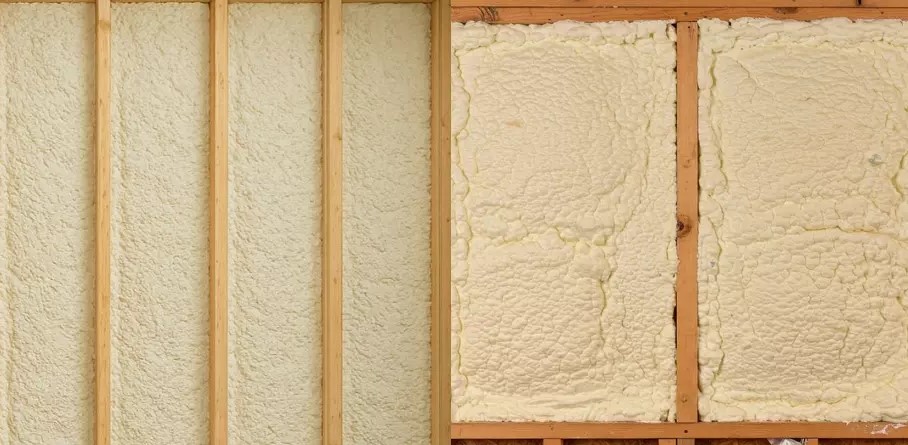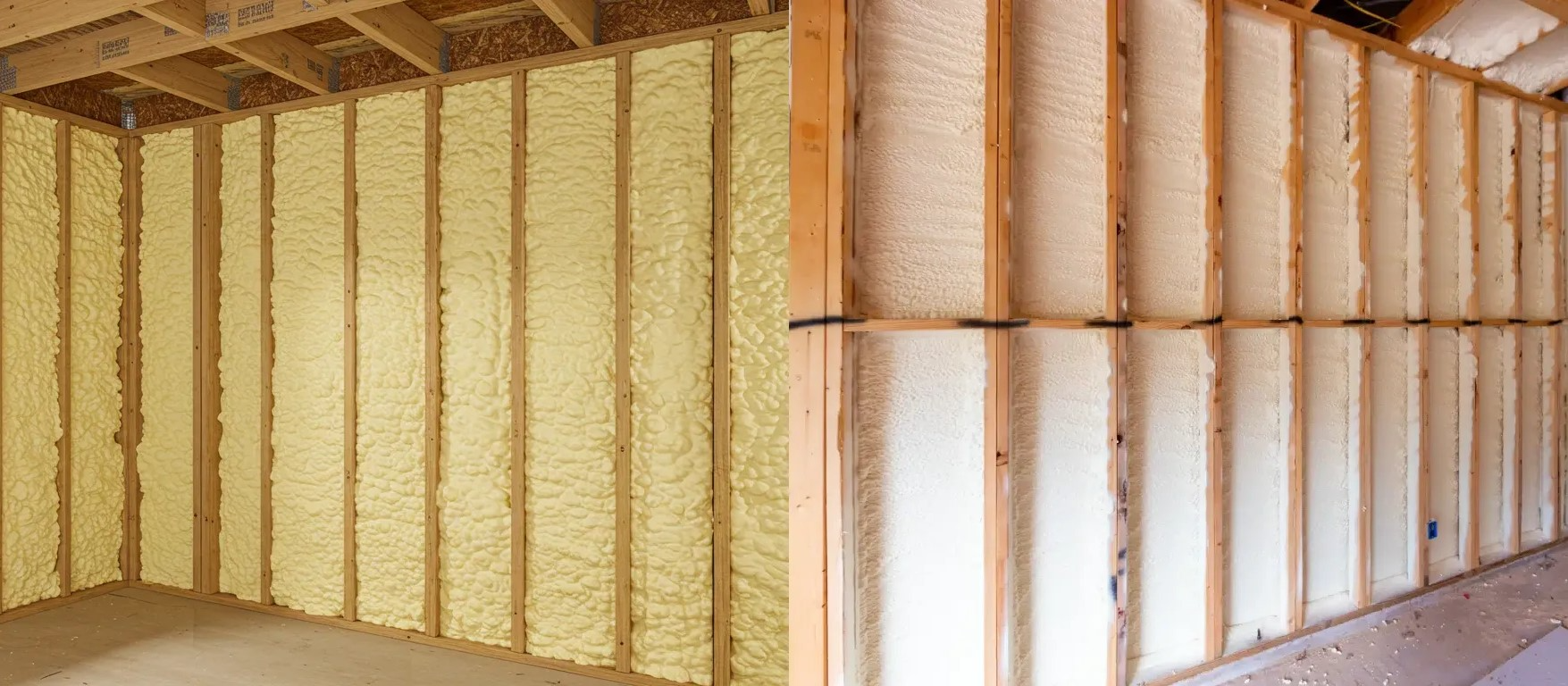
Closed-cell spray foam is a dense, rigid insulation material made up of tightly packed cells filled with gas. Its structure creates a solid barrier against air and moisture. In contrast, open-cell spray foam is softer and more flexible, made up of interconnected cells that allow air and vapor to pass through. The main differences lie in their structure, performance characteristics, and typical applications.
Closed-cell foam provides higher R-values per inch, structural reinforcement, and moisture resistance, making it well-suited for exterior walls, basements, and metal buildings. Open-cell foam offers cost-effective coverage with sound absorption and is more appropriate for interior walls and ceilings. Understanding these differences is critical for selecting the right insulation type based on building use, regional climate, and performance expectations.
Ohio Valley Spray Foam has installed both types across residential, commercial, and agricultural properties in varying Ohio Valley weather conditions. This content reflects insights gained through field application, performance tracking, and building envelope consultation.
| Feature | Closed-Cell Spray Foam | Open-Cell Spray Foam |
|---|---|---|
| Cell Structure | Fully enclosed, compact | Partially open, interconnected |
| R-Value per Inch | 6.5 to 7.4 | 3.5 to 4.0 |
| Water Resistance | High (acts as vapor barrier) | Low (permits vapor movement) |
| Air Barrier Capability | Excellent | Moderate |
| Sound Dampening | Lower | Higher |
| Expansion Rate | 30:1 | 100:1 |
| Density | 1.75 – 2.2 lbs/ft³ | 0.4 – 0.5 lbs/ft³ |
| Structural Support | Adds rigidity | Minimal structural impact |
| Cost per Board Foot | Higher | Lower |
| Typical Use Cases | Basements, exteriors, pole barns | Attics, interior walls, ceilings |
| Specification | Closed-Cell Foam | Open-Cell Foam |
|---|---|---|
| Air Impermeability | < 0.02 L/s·m² @ 75 Pa | ~0.3 L/s·m² @ 75 Pa |
| Water Vapor Permeance | < 1 perm (at 1.5″) | ~10 perms (at 3.5″) |
| Compressive Strength | 25-30 psi | 4-5 psi |
| Flame Spread Rating | < 25 (Class I) | < 25 (Class I) |
| Racking Strength Increase | Up to 300% in wall assemblies | Negligible |
In pole barn applications across Southeastern Ohio, closed-cell foam resists condensation and prevents steel panel corrosion a common issue when using open-cell.

In Ohio Valley’s humid continental climate, moisture control is critical. Closed-cell foam is better suited for below-grade walls, crawl spaces, and exterior applications due to its vapor barrier capabilities. Open-cell is often used in attics and conditioned spaces where vapor permeability is less of a concern.
In regions with frequent freeze-thaw cycles, closed-cell foam adds durability to rim joists and exposed framing, reducing the risk of air leaks and water intrusion.
Yes, if moisture resistance, insulation density, and space efficiency are priorities.
Yes. For example, closed-cell can be used on exterior walls and open-cell in interior partitions.
Properly applied spray foam can last over 30 years without significant degradation.
Most spray foams cure within 24 hours, though full off-gassing may take a few days.
Contact Ohio Valley Spray Foam for experienced insight on insulation choices that match your building’s requirements and local climate. From pole barns to residential retrofits, insulation performance depends on more than just R-value.
Phone: (740) 629-9984 Email: [email protected]
Yes. It reinforces wall and roof assemblies, especially under lateral load.
Yes, but ventilation and material compatibility must be carefully assessed.
Proper PPE and ventilation are essential. Occupants should vacate during application.
Closed-cell foam resists moisture; open-cell must be paired with a vapor retarder in humid zones.
Foam provides a seamless air barrier, unlike batts which can leave gaps and compress over time.